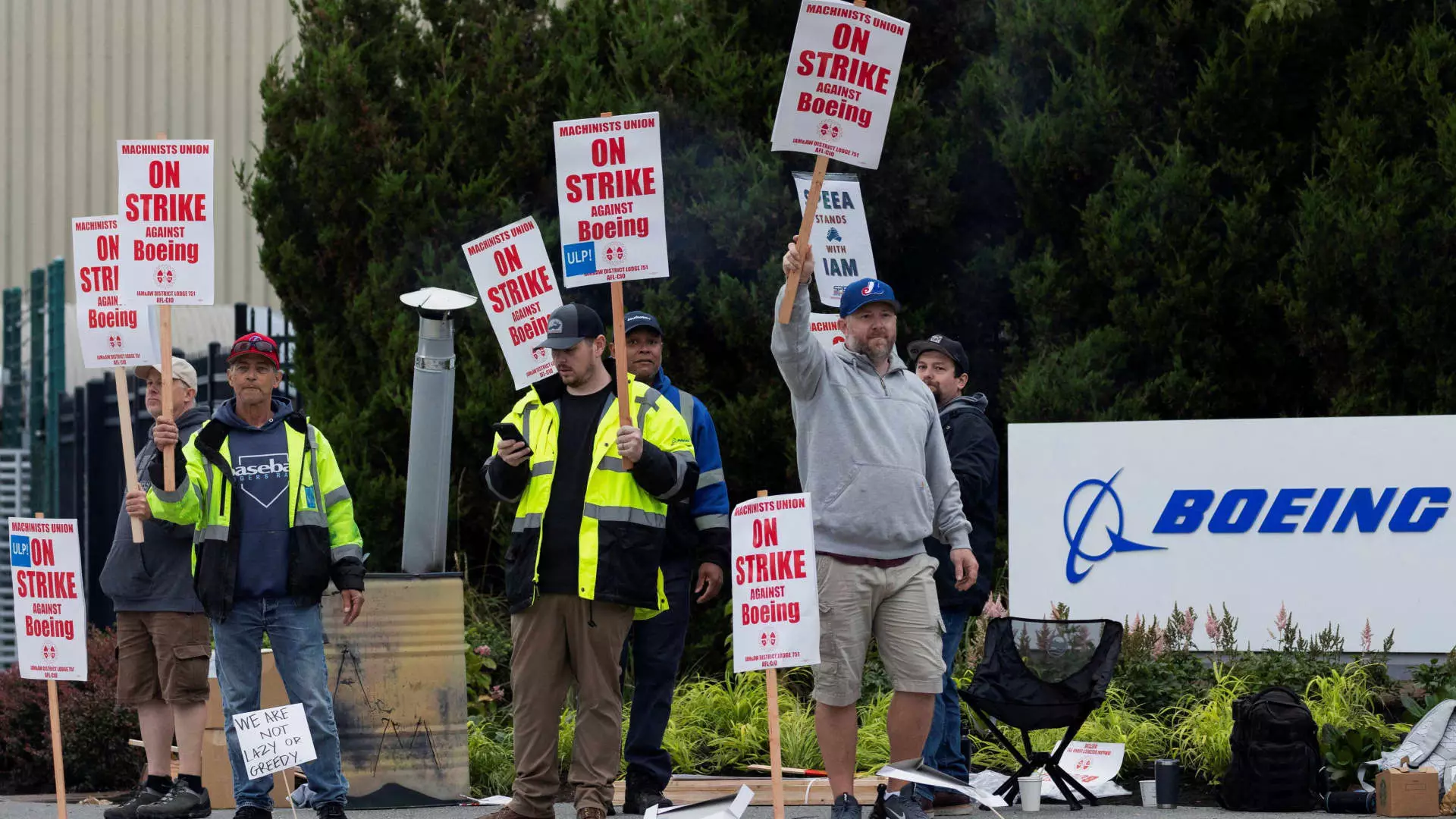Boeing, one of America’s most iconic aerospace companies, finds itself in the throes of a significant labor dispute. After over three decades without a major strike, its current crisis underscores the rising demands of workers amidst the company’s precarious financial state. The machinists, who are the backbone of Boeing’s production lines, are fighting for wage increases and improved working conditions, while the company grapples with the implications of a strike that has now strayed into its second week.
In the shadow of Boeing’s Renton factory, thousands of machinists have set up picket lines demanding better pay in response to the soaring cost of living in the Seattle area. With housing costs skyrocketing—home prices having increased 142% in just a decade—many workers feel that their salaries no longer reflect their financial realities. Some employees have begun to take on side jobs, from landscaping to food delivery services, to make ends meet as the strike continues. Workers like Jake Meyer illustrate the plight of many: while he takes pride in his work automating airplanes, the financial strain is pushing him toward other sources of income.
Boeing’s financial landscape is precarious, with an astonishing $60 billion in debt. The ongoing strike is projected to cost Boeing nearly $50 million a day, inflicting more damage on its already wounded finances. Following a disappointing year with an $8 billion loss, the company is under immense pressure to resolve the labor dispute quickly. Furthermore, the strike’s duration could lead to a credit rating downgrade, increasing Boeing’s borrowing costs and creating a vicious cycle of financial limitations.
As 30,000 machinists walked off the job after rejecting a modified labor deal by a resounding vote, the atmosphere is charged with solidarity among workers. The union—representing machinists across Washington State, Oregon, and beyond—is well-prepared for a long fight, providing essentials to picketers and emphasizing the strength of their collective bargaining power. Its demands extend beyond wage increases; workers are also calling for a restoration of pensions lost over a decade ago and annual bonuses—a reflection of their years of dedication to Boeing.
In negotiations, tensions run high, with Boeing’s latest offer of a 25% wage increase over four years falling flat against the union’s request for a 40% hike. Disappointment has been voiced on both sides as the lack of meaningful progress continues. New CEO Kelly Ortberg is under scrutiny; only weeks into his role, he faces the daunting task of not only salvaging the company’s financial health but also fostering a productive relationship with its workforce.
The Boeing strike is emblematic of broader labor trends occurring across various industries in the United States. From autoworkers to actors, workers are increasingly standing up for better wages and favorable working conditions in a tight labor market. The Biden administration has expressed support for both parties to find common ground, reflecting the gravity of the situation and its potential wider implications.
As the strike drags on, all eyes are on Boeing’s next steps. The complexities of retaining skilled labor while resolving internal disputes weigh heavily on the company, further complicated by the staffing shortages resulting from pandemic-era layoffs. This strike is not just a battle over wages; it is a critical moment that may define Boeing’s reputation and operational capabilities going forward.
The implications are not only for the workers but for the entire aerospace supply chain, which has already begun to feel the strain of halted production. If negotiations do not improve soon, Boeing may find itself lagging behind in a competitive industry desperate for skilled labor.
The emerging conflict between Boeing and its machinists serves as a reminder that companies must navigate the delicate balance of profitability and fair labor practices. As industrious conversations unfold and collective demands persist, the resolution of this strike will be critical not only for Boeing’s workforce but also for the future of labor relations in corporate America. Each day that passes without resolution pushes both sides closer to a crossroads that will shape the future of work in the aerospace industry.

